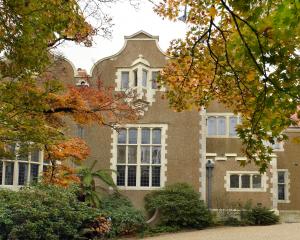Most people who bequeath their bodies for anatomical teaching and research at the Otago School of Medicine do so to aid medical science and teaching, a survey shows.
The survey, reported on in the latest issue of the New Zealand Medical Journal, sought to find out if the profile of donors had changed since last evaluated in 1992.
Authors University of Otago bequest administrator Kathryn McClea and department of anatomy and structural biology Prof Mark Stringer found that 90% of the 140 donors who replied to the survey questionnaire gave aiding medical science and teaching as their main reason for their bequest.
In the 1992 study, the proportion who gave this reason was lower, at two-thirds of the survey group.
Most of the respondents in 1992 thought their bodies would be used for medical research, although at the time cadavers were used wholly for teaching purposes.
"Encouragingly, from the aspect of informed consent, almost all respondents now acknowledge that their bodies will be used for teaching and research, although the type of research, which tends to focus more on structure and function rather than specific diseases, may not be appreciated," the authors stated.
The next most common main reason for donation of the 209 given in the latest survey was gratitude to the medical profession, either for treatment received by themselves or their relatives and friends.
Many respondents commented that their medical conditions might be of interest to students, including joint replacements, arterial bypass operations, cancer, multiple sclerosis and emphysema.
The respondents, who registered their bequests between 2000 and 2009, were mostly aged over 50.
Almost 40% had other family members who had donated bodies, "suggesting that this form of altruistic behaviour is not only a feature of individuals but, in some cases, families".
Dislike of funerals was the prime reason given by 18% of the respondents for their bequest, but only 6% reported that the cost of a funeral was a main factor.
Many also regarded bequeathing their body as more useful than organ donation, as their perception was that elderly donors' organs were not likely to be so useful.
One wrote " You wouldn't like to have model T Ford parts put into a Ford Falcon, would you?"Ms McClea and Prof Stringer did not explore the reasons for whole-body donation rather than organ donation, but suggested it was possible some believed whole-body donation was more compatible with keeping body parts together.
This was a reason some family members objected to organ donation from deceased relatives even if that relative had earlier said they wanted to be an organ donor.
The authors emphasised the importance of altruistic whole-body donation for teaching and research, saying the maintenance of high ethical standards for the body bequest programme was vital, " particularly in view of notable high-profile scandals surrounding the misuse of body parts".
Body donations enabled the university to develop a wide range of training courses for both undergraduate and postgraduate health professionals.
The authors noted that some United States universities which withdrew their undergraduate dissection programmes reinstated them when they found the standard of anatomical knowledge in students was adversely affected.
A documentary about the university's body bequest programme , Donated to Science, screened on TV3 last November, attracting an audience of more than 720,000 and wide acclaim. Produced by Dr Paul Trotman and Prof Helen Nicholson, a professor in the anatomy and structural biology department, it featured interviews with some donors and students taking part in dissections.












